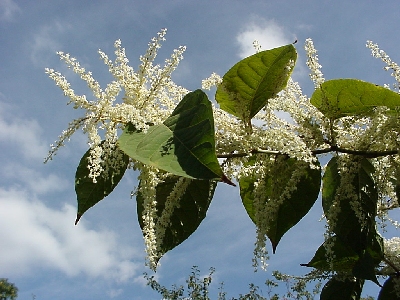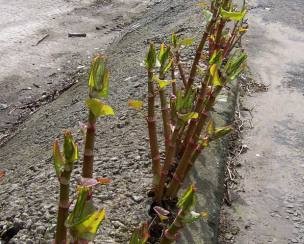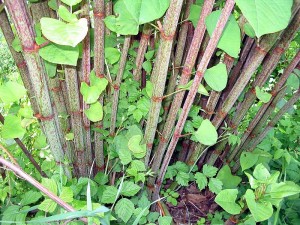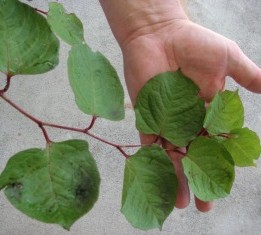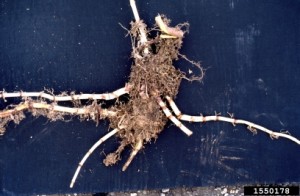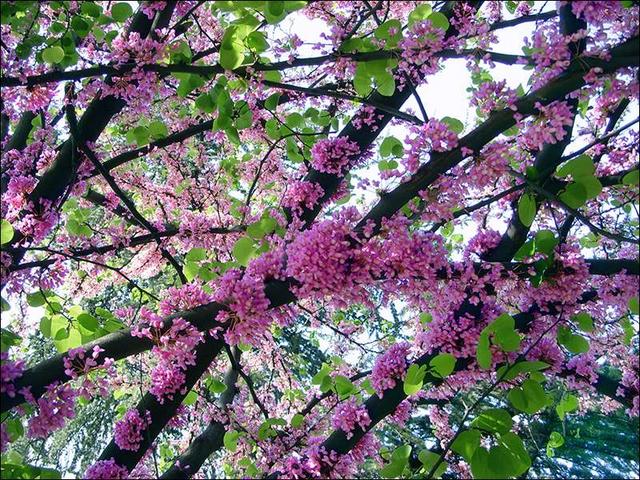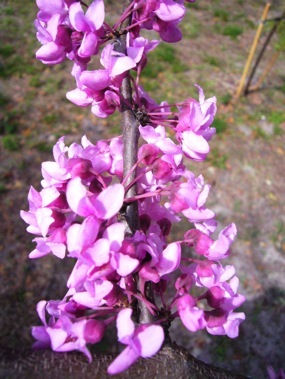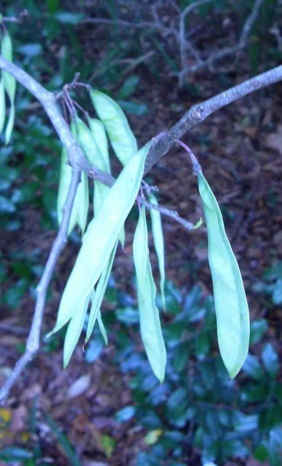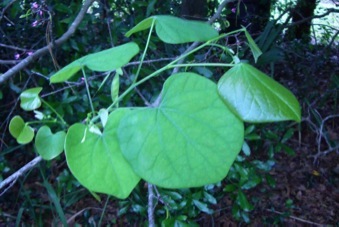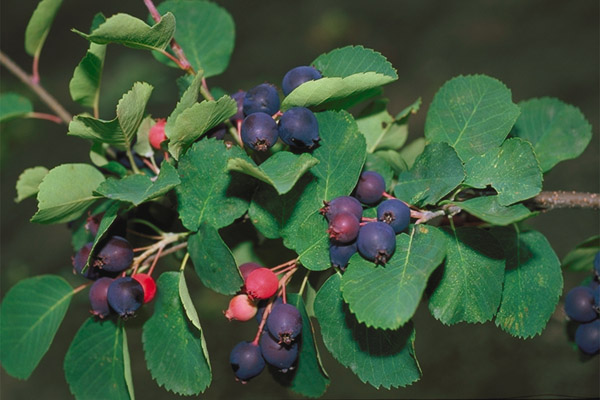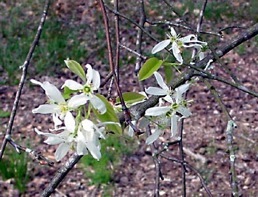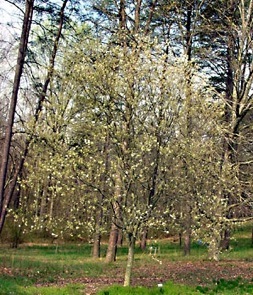Japanese Knotweed gets no respect. Nearly everywhere it grows it’s listed as a prolific, noxious, invasive, dangerous bad-for-the-world, the-sky-is-falling weed. Oh by the way, it’s edible. Might be even really healthy for you…. pesky weeds have that habit.
Japanese Knotweed is listed by the World Conservation Union as one of the world’s worst invasive species. Perhaps it should be planted in countries where starvation is annual. Introduced into Great Britain by 1825 Japanese Knotweed has been on the decimation list for more than 30 years and has to be disposed at landfills licensed to handle the dreaded edible. In fact they spend some two billion pounds to combat it annually, which as of this writing is about three billion dollars a year. It increased the construction cost of the 2012 Olympic stadium by some 70 million pounds. Japanese Knotweed is also “invading” New Zealand, Australia, and Tasmania. It arrived in North America in the late 180os and is officially found in 39 of the 50 United States, probably more, and six provinces of Canada. It’s an invasive weed in Ohio, Vermont, West Virginia, New York, Alaska, Pennsylvania, Oregon and Washington. About the only place where they are not upset with the plant is where it’s native, southeast Asia. What do they know the rest of the world doesn’t? It is said that Japanese Knotweed out lives the gardener and the garden.
Knotweed, in the Buckwheat family, is not liked in western nations because it grows around three feet a month, sends roots down some 10 feet, grows through concrete, damaging roads, dams, buildings and just about anything made by man. It’s a pain in the asphalt. Forages take advantage of it eating — raw or cooked — young shoots, growing tips of larger plants and unfurled leaves on the stalk and branches. Many folks say it tastes like rhubarb but I think a lemony green is more accurate, crunchy and tender. For the health conscious it is a major source of resveratrol and Vitamin C … a noxious weed AND very healthy. Tsk…Tsk… The California Department of Food and Agriculture and the book Cornucopia II both say the rhizomes are edible. No references are given as to how to cook them nor have I tried. Usually the roots are used medicinally. Giant Knotweed, Polygonum sachalinense (Fallopia sachalinensis) is similarly consume except its fruit is eaten as well, or stored in oil. Incidentally, the Giant Knotweed was “discovered” on Sakhalin Island, north of Japan, by Dr. H Weyrich, surgeon on the Russian expedition ship Vostok commanded by Captain Lieutenant Rimsky-Korsakov, older brother of the composer N.A. Rimsky-Korsakov… it’s a small world afterall…
Botanically take your pick: Japanese Knotweed is known as Fallopia japonica, Polygonum cuspidatum, and Reynoutria japonica. In Europe they prefer Fallopia japonica (named for Gabriello Fallopia, 16th century Italian anatomist who “discovered” fallopian tubes. Japonica means Japan. In North America it is known as Polygonum cuspidatum, which makes a lot more sense to me. I see nothing fallopian tubish about the plant whereas Polygonum (pol-LIG-on-um) means many joints and the plant does have that. Cuspidatum (kuss-pid-DAY-tum) means sharply or stiffly pointed, and that it is.
Other names names include fleeceflower, Himalayan fleece vine, monkeyweed, Huzhang, Tiger Stick, Hancock’s curse, elephant ears, pea shooters, donkey rhubarb, sally rhubarb, Japanese bamboo, American bamboo, and Mexican bamboo. The Japanese call it itadori (????) which is from Chinese and mean “tiger walking stick” or “tiger stick.” Best guess, and my thanks to Ala Bobb for the insight, is that the stick has stripes like a tiger. Sometimes it is called itodori which means “thread stick” a reference to the the thready flower. Two other names, in Chinese, are, ?? “pain take” and ?? “board take” In Engish we would reverse them, “take pain” and “take board.”
Lastly there is an ethnobotanical lesson in Japanese Knotweed: The Cherokee ate the cooked leaves. Shall we thus call it a Native American food? There are several examples of imported plants being adapted by the native population, no fools they. Those get reported as Native American food without the “when” being reported. Folks just assume they were eating or using said before the Europeans arrived. Black Medic is another example. If I remember correctly it first came to North America around 1912, just a century ago. But it is listed as a Native American food because some western tribes did eat it once they knew what it was. It’s the same with a ground cover imported in the 1930s. The lesson is just because the natives ate a particular food it does not mean it was around before outsiders arrived. It’s kind of like saying chocolate pudding was an Aborigines’ food.
Green Deane’s “Itemized” Plant Profile: Japanese Knotweed
IDENTIFICATION: Polygonum cuspidatum: A semi-woody perennial, fast growing, hollow, bamboo-like stems forming dense, leafy thickets, woody with age. Young shoots are red. Leaves simple, toothless, hairless, alternating, broadly ovate with a pointed tip, 3 to 6 inches long, 2 to 4½ inches wide, on a long leaf stem. Flowers branching in spike-like clusters, individual flowers are 1/8 inch across, white to greenish or pinkish, with 5 petals, 8 stamens. Male and female flowers separate (dioecious.) Female flowers can produce small 3-angled black-brown fruit. Seed production is uncommon.
TIME OF YEAR: Purple shoots appear in spring, flowers late summer, early autumn.
ENVIRONMENT: Riverbanks, roadsides, moist, disturbed areas.
METHOD OF PREPARATION: Young shoots, growing tips, young leaves boiled or steamed and eaten like asparagus, or chilled and served with a dressing. Can be used in pies. soups, aspics, sauces, jams, chutneys even wines. The roots, actually rhizomes, are sometimes eaten. It is good fodder for grazing animals, including cattle, sheep, goats, horses and donkeys. Old stems have been used to make matches. It is high in oxalic acid so if you avoid spinach or rhubarb you should avoid knotweed.
Recipes from Herbalpedia
Japanese Knotweed Purée
Gather stalks, choosing those with thick stems. Wash well and remove all leaves and tips. Slice stems into 1-inch pieces, put into a pot and add ¾ cup sugar for every 5 cups of stems. Let stand 20 minutes to extract juices. Add only enough water to keep from scorching, about half a cup. Cook until pieces are soft, adding more water if necessary. They will cook quickly. When done, the Japanese Knotweed needs only to be mixed with a spoon. Add lemon juice to taste and more sugar if desired. Serve chilled for dessert just as it is, or pass a bowl of whipped cream. This purée is excellent spooned over vanilla ice cream or baked in a pie shell. Keeps well in the refrigerator and may be frozen for later use. (City Herbal)
Japanese Knotweed Bread
2 cups unbleached flour
½ cup sugar
1 ½ tsp baking powder
1 tsp salt
1 egg
2 Tbsp salad oil
¾ cup orange juice
¾ cup chopped hazelnuts
1 cup sweetened Japanese Knotweed Purée
Preheat oven to 350F. Sift dry ingredients together into a large bowl. Beat the egg white with the oil and orange juice. Add along with hazelnuts and purée to dry ingredients. Do not mix until all ingredients are added, and blend only enough to moisten. Do not over mix. Spoon gently into buttered 91/2-by-5-by-3-inch loaf pan. Bake about 1 hour or until a straw or cake tester inserted in the center comes out dry. Cool by removing from pan and placing it on a rack. For muffins, spoon into buttered muffin tins and bake about 25 minutes. (A City Herbal)

